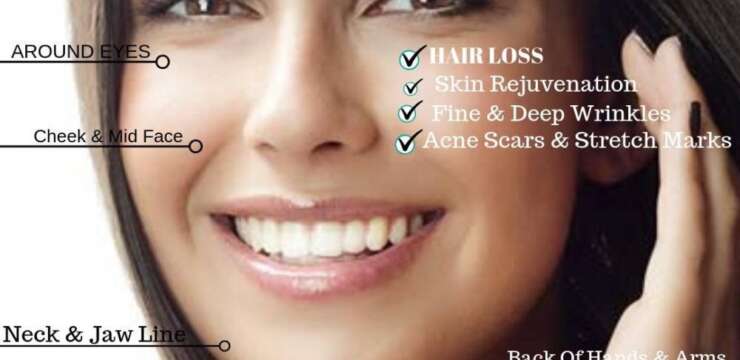If you are dealing with sun damage then you are no stranger to scars, wrinkles, dark spots and sunburn on your skin. This is where our Fairfax, VA, team of chief medical officer Dr. Syed Ashraf along with Dr. Fatima Aziz and Glenda Thomas, DNP can help you manage your symptoms and offer the best laser treatments possible.
Sun Damage, Wrinkles, and Sunscreen
We’re all exposed to the sun and its ultraviolet rays although not to the same extent. A trucker who spends 10 hours on the road each day will certainly suffer more than someone who works in an office. You’ll even see the difference on the face of a driver as the side facing the window will show more damage than the other.
Forms of Sun Damage
Ultraviolet rays damage DNA particularly in the skin. By doing this the skin starts to lose its integrity, elasticity, and its ability to resist damage.
Wrinkles, age spots, dry skin, spider veins, loose skin, and a ruddy complexion are just some of the things you might notice on someone who’s exposed to the sun for a large amount of time.
We’re mainly talking about chronic skin exposure here, but if you were to be exposed to lots of sunlight on a vacation for instance you would end up with the famous sunburn. Sunburns are often mild only producing some redness and tenderness. If you’re not careful though, it could be more severe with the formation of fluid filled blisters.
Actinic keratosis is another much feared complication of prolonged sun exposure. Actinic keratosis is a skin lesion that appears in the form of a scale (or a couple of them). These scales are usually reddish or brown and won’t go away on their own. You’ll have to visit a dermatologist to treat them by chemical removal or freezing.
We worry about actinic keratosis because about 10% of them end up changing into cancer particularly squamous cell carcinoma.
The most prominent risk factor for the development of skin cancer is excessive exposure to sunlight and the ultraviolet rays that come with it. Basal cell carcinoma, squamous cell carcinoma, and malignant melanoma can all develop but basal cell carcinoma is the most common. People with light skin have fewer melanin which makes them more likely to develop these cancers as opposed to people with darker skin who are protected by melanin.
Wrinkles
Wrinkles form because of damage to collagen in your dermis. Sunlight and smoking are the two causes that speed up the development of wrinkles the most. The dermis is the part of your skin beneath the epidermis and it contains collagen which plays a big role in maintaining the integrity of skin. Ultraviolet rays damage the collagen resulting in a loss of that integrity.
If you want to protect yourself from sun induced wrinkles, you shouldn’t spend too much time in the sun especially around noon. Wear protective clothing even if it’s something light just to keep the sun from affecting your arms and legs. As for areas that can’t be covered by clothing you should rely on sunscreen and we’ll talk more about that in a few.
There are several available treatments to treat wrinkles that already exist:
- Fractional laser is a new and exciting method of treating wrinkles. The laser works by creating small invisible wounds in your skin. These wounds induce skin healing and the formation of new collagen. About 1-2 sessions will be needed at intervals of a few weeks.
- Laser Genesis (Lunch Time Facial) is another laser method of treating wrinkles and boosting collagen. By gently heating the upper dermis, laser genesis stimulates collagen growth. Over the course of your treatments, laser genesis can help restore your skin’s youthful glow and appearance by smoothing out uneven texture caused by aging, sun damage, scars and wrinkles.
3-6 sessions will be needed for maximum results.
- One of the most popular ones is the injection of botulinum toxin which paralyses the muscles under the skin. One of the most popular places people inject botulinum is in the forehead where most people develop wrinkles as they age. This is of course done by a doctor and not self-administered. The effects last 6-9 months.
- Injecting filler into wrinkles can flatten them out and elevate the skin. This also lasts 6-9 months depending on how much filler was injected and where.
- Face lifting by plastic surgeons can be used in cases where the damage is somewhat extensive.
When you meet your doctors at Carelife Style, you’ll have a discussion on the best available treatment option for you.
Choosing Your Sunscreen
Sunscreen is your biggest ally when it comes to protection from sun damage. The American Cancer Society has a few recommendations to help you choose the best sunscreen.
First of all, look for products that are broad spectrum. There are two forms of UV (ultraviolet) light, UVA and UVB. The sun mostly emits UVB which are the main cause of sunburns and skin cancer. So any regular sunscreen will protect against UVB. Broad spectrum products will also protect against UVA. UVA might not be emitted by the sun in high amounts but it still has a role in skin cancer and skin aging. So look for broad spectrum sunscreens for maximum protection.
SPF, sun protection factor, is another major determinant of a product’s quality and ability to resist sun damage. No sunscreen protects you completely but the higher the SPF, the more protection you get. Keep in mind though that once the numbers start to get high, the differences between them become fewer.
To simplify it, SPF 15 filters out around 93% of UVB rays and SPF 30 filters out about 97%. The difference between them is about 4%. On the other hand, SPF 50 and 100 filter out 98% and 99% of UVB rays respectively making the difference between them just 1%.
Try to purchase sunscreen that’s water resistant. This doesn’t mean it can’t be washed off, it just means that it can last for a specified period of time in the water before it loses its effect. Water resistance is useful if you’re going swimming or expect to sweat a lot. Products will specify how long the water resistant effect should last. It’s usually between 40 and 80 minutes. After that you’ll need to reapply.
Protecting your skin from the sun and its UVB rays is important not just for appearance, but also in the prevention of skin cancer. If you have light skin then you should be extra cautious too. With all the changes in our climate and the ozone, the threat of harmful rays from the sun is higher than ever so we need to take extra precautions to protect ourselves.
Call Carelife Style Medical Aesthetics today at (703) 854-1298 to schedule an appointment with us.




